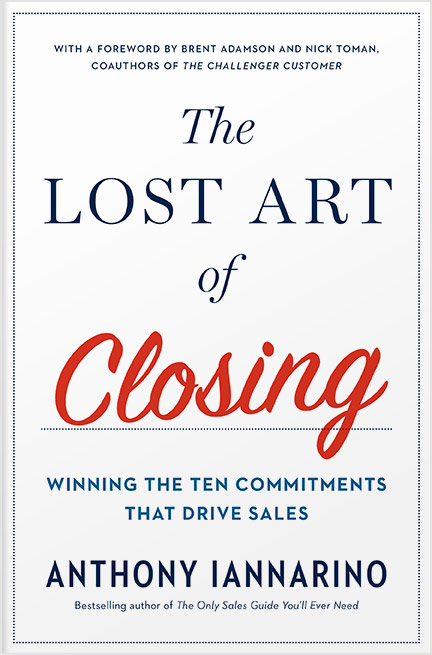The single question I hear most often from salespeople is, “How do I compel my prospective client to take action?” We have to unpack this a bit to explore what’s behind this question. You can compel your client to take action, but much of what salespeople believe is compelling doesn’t achieve the outcome.
You Have Lost Control
One of the reasons for the question as to how you compel your dream client to change is your having lost control over the process—if you ever had it at all. One helpful way to think about selling is that you sell a meeting, sell the process, and then sell your solution. Many—or most—salespeople sell the meeting and then work on selling the solution. By avoiding the sometimes difficult conversation that is selling the process, they leave meetings with no defined next steps—and no commitment from their prospective client (see this video on non-commitments and soft-commitments).
To control the process, you must make a case for the next meeting after each meeting. You can set the stage for that commitment even early in the process. (See Neil Rackham’s Spin Selling and my second book, The Lost Art of Closing). When you leave a meeting without a commitment, you end up trying to compel them to do what comes next over email and voicemail, two mediums that make it difficult to compel action.No more pushy sales tactics. The Lost Art of Closing shows you how to proactively lead your customer and close your sales. 
Once you lose control, it is difficult to recover. The best thing to do is to sell the process when that is possible.
Weak Discovery and No Exploration
One of the challenges in traditional discovery is that it isn’t as potent as it once was when it comes to compelling change. The difference between what I call Level 3 Value Creation and Level 4 Value Creation, is that Level 3 tends to be reactive, while Level 4 is proactive. In the first case, you ask your prospective client about their existing challenges. In the second, you set the context for change by working to compel change.
Traditional discovery assumes the prospect knows what and why they need to change. Even though the conventional ways we think of eliciting the prospective client’s challenges and opportunities are still useful, other approaches provide a greater range of action, something we might call Exploration. A Level 4 approach would allow you to help shape the lens your client is looking through to help them recognize the more significant, more systemic threats and opportunities, as well as the improvement to their strategic outcomes. (You can find more information about this approach in Eat Their Lunch: Winning Customers Away from Your Competition).Win customers away from your competition. Check out Eat Their Lunch
While traditional discovery assumes the client is—or should be—already compelled to change, we now start with an assumption that salespeople can and should work on making a compelling case for change. A modern approach does not preclude the idea that it isn’t beneficial to develop and test a theory as to what is already compelling your dream client.
What Is Already Compelling Them?
In every vertical, there are systemic challenges that some companies have not addressed. There are also external forces that are either putting pressure on these companies to change or soon will be. The easiest way to get a glimpse of what these forces are and how leaders think about them is to look at the financial filings of publicly-traded companies. Their disclosures to investors describe their forward-looking strategies, as well as what they believe to be threats to their results.
If you can tie your theory about why your dream client should change to what is already compelling them to do something different, your solution has a better chance of moving forward.
I once heard a salesperson ask a C-level executive that was speaking at their sales kickoff meeting what he would have to do to become the executive’s number one priority. The executive told the salesperson what he sold would never be their top priority, but that if he could help improve any of the top three, he’d get much attention.
The reason leaders count on trusted advisors is that they are so busy driving results in their business that they can’t track everything going on around them. They tend to surround themselves with people who can see around corners and cover the gaps for them. Sometimes, when you are at your very best, you know what should be compelling them before they do.
What Should Be Compelling Them
A trusted advisor doesn’t show up after their client is damaged by not changing soon enough. The advice, “You shouldn’t have done that,” isn’t helpful after the fact.
There is an advantage in creating and winning opportunities by shaping the opportunity well in advance. By providing the context around why your dream client should change, what they stand to lose or gain, and helping them by providing them the right questions, you position yourself to both create the opportunity and win it. By waiting until someone else has done this work, you end up giving them a distinct advantage.
This is Level 4, proactively making a case for change. If you believe it’s more difficult, try selling against someone who has shaped your dream client’s view of their business and what they need to do.
What Happens If They Do Nothing?
When your dream client isn’t compelled to take action, including the next meeting, what you are missing implications. There are two things salespeople try to leverage as implications that don’t often rise to that level for their dream clients.
- Deadlines on pricing: Your dream client is changing because they want a discount. That’s why they aren’t compelled.
- Ultimatums: There is no reason to send a break-up letter to a prospect as a way to get them to reengage with you. The problem with telling them you are going to delete their opportunity and move on is that your dream client can accept your order.
If you want to compel change, you have to focus on the implications of not changing now. Anything less than that isn’t likely to get your prospective client to take action.








.jpg?width=768&height=994&name=salescall-planner-ebook-v3-1-cover%20(1).jpg)


